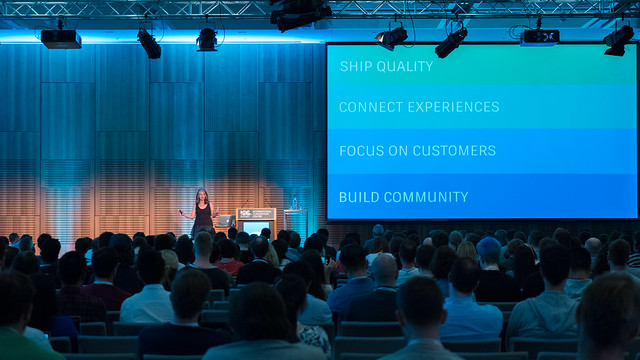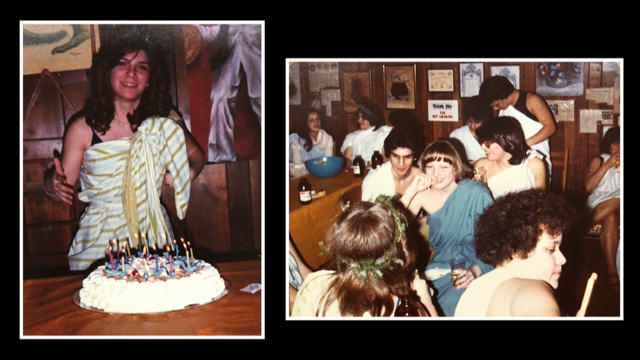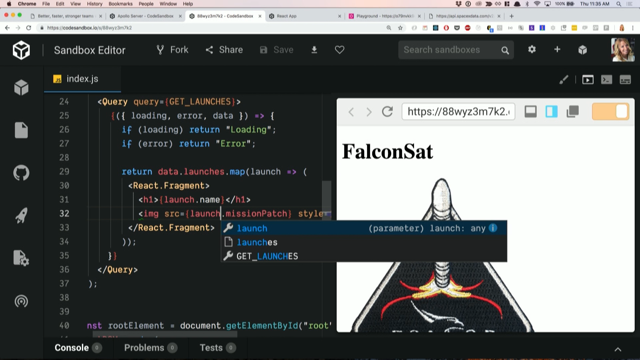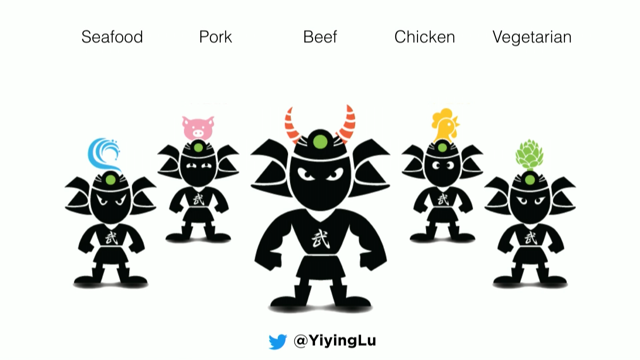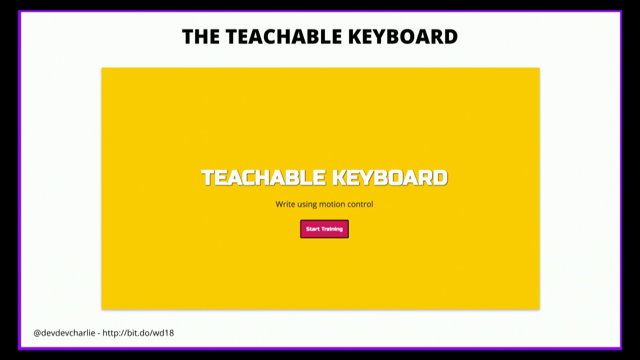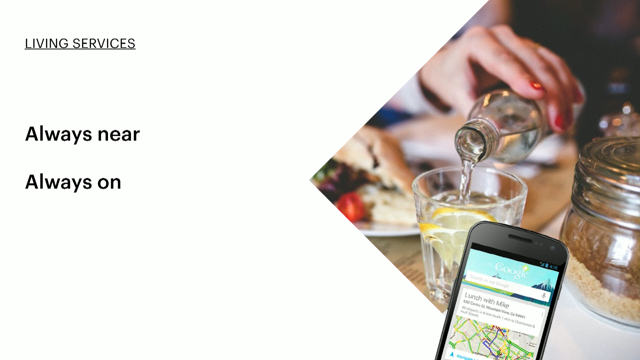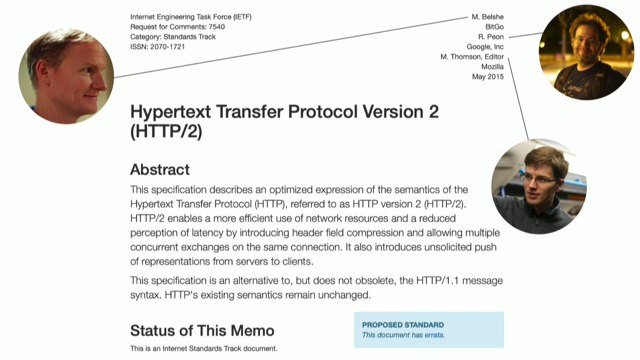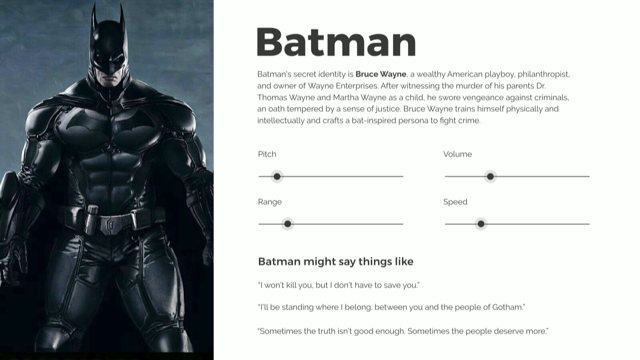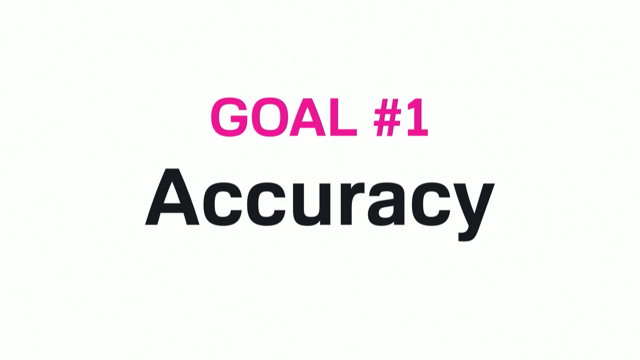Lessons from the Battlefield
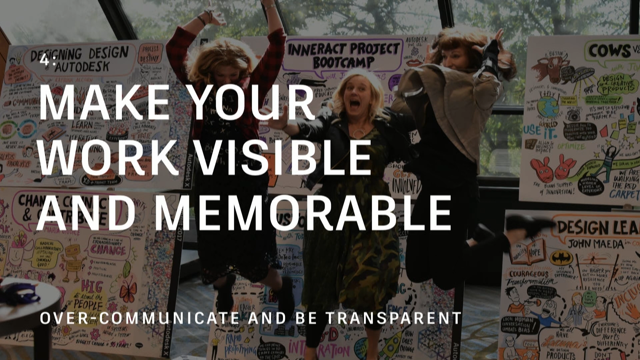
(energetic instrumental music) - Hi everybody.
Hi.
Hello designers, developers, and everybody in between. So designers, we have finally arrived.
- [Audience Member] Woo! - Yeah! We are now in great demand.
Over the course of the last ten years, design agencies have been acquired by larger companies at a record clip.
My own company, hot studio, was a 100 person, multidisciplinary design studio which was acquired by Facebook in 2013.
And it was one of the largest design acquisitions done at the time by a technology company. We now have a seat at the leadership table. More and more design leaders are participating at the highest levels of organisations.
And design driven businesses have flourished in companies in which design leaders are operating at the C level.
And finally, finally, we no longer have to justify our value to business.
The data now speaks for itself.
Design driven companies that focus on great customer experiences are good for business. They consistently outperform the stock market by gaining higher market share than their competitors. With a strong focus on customer experience design driven companies yield a higher competitive edge and gain 50% more loyalty among their customers. A new McKinsey report just came out in October that contains similar findings, proving design-centered companies consistently outperform industry benchmarks by a factor of two to one.
So traditional businesses, like my former employer AutoDesk, are seeking out design leaders to help make that shift.
In 2015 I left Facebook to join AutoDesk and tackle a large-scale problem for a very worthy cause.
To unify and build a strong global design practise. To improve product experiences across the board. And to help shift that company's culture from being technology centred to becoming much more experience centred and customer driven.
So, AutoDesk makes software for people who make things. And historically, the company was rooted in putting out this traditional complex software development. When I joined AutoDesk in 2015, the company was 35 years old, that dinosaur years in technology. It had about 9,000 employees and they were based in offices all over the world.
And of those 9,000 employees there were about 400 designers working on scrub teams along the chain.
And of those 400 designers they worked on over 100 products worldwide in their portfolio. But ironically, I was the first ever VP of Experience Design for a company that makes software for designers.
As I embarked on this new job at AutoDesk I didn't truly appreciate the scale of change that is needed to shift culture to become much more experience driven.
Bill Drayton, he was the founder of Ashoka. He's known as a serial entrepreneur.
He believes that we are in the middle of a necessary but painful historical transition. And I think we can all feel this regardless of where we live in the world today. We are living in difficult times.
And we can no longer solve problems that are fixed in time.
Instead we need designers and developers who can solve problems based on evolving circumstances. And Bill Drayton defines this new breed of people as changemakers.
So changemakers are people who see the patterns around them. Identify the problems in any situation.
Figure out ways to solve the problem.
Organise fluid teams.
Lead collective action.
And then continually adapt as situations change. This definition piqued my interest because it sounds a whole lot like what we all do for a living, right? So change is fundamentally a design problem. Therefore, embracers of design-driven culture are changemakers no matter where they sit inside the organisation.
And, here's the good part.
You all don't need to have design in your title in order to be a changemaker. So, as a changemaker, where do you begin? When I joined my company at AutoDesk as the first VP, there was really no job description for me. My boss asked me, you're here.
What are you gonna do? What are you gonna tackle first? I said, I have no fucking idea.
(audience laughs) Give me three months.
And so, I start, like, everything I do in life I treat every problem like it's a design problem. You start with people.
So I travel the world and I listened.
I hung out in kitchens, freaked a lot of people out like, what's this VP doing in my kitchen? And I basically would talk to anybody that I would interact with.
I didn't care if it was an intern, developer, PM, a Vice President, a CEO.
I didn't care.
I just, I'd talk to anybody that I came across and I asked them five questions.
First question was, tell me your story.
I want to know who you are.
I want to know why you're here.
The second question is, why did you choose to work at AutoDesk? The third one was, what's keeping you up at night? And then what are your hopes and dreams? And then the last question I asked which surprised people, was how can I help you? So then, like a good designer you do your qualitative and quantitative analysis and you come up with conclusions.
So after interviewing like everyone literally hundreds of people over a three month period these issues consistently came up over and over again. Let's see if you can identify with them.
Engineering centric culture focused on execution. A lack of a cohesive design community.
An imbalance of power on product teams, you know designers, developers, PMs, data scientists they're all supposed to be equal that was not true in this position.
Fragmented access to customers and research. And then quantity of features over quality of experience. How many people can feel the pain? (laughs) so these problems seem to exist in most companies, right? The big question is how we're gonna address these problems.
So the first kind of thing that I discovered in working in large organisations and my first rant of the evening.
Silos in organisations are innovation killers. Yes, applause over there, for the innovation killer concept. Um, silos create these organisations of efficiency and they are necessary in large companies.
However, silos tend to create fiefdoms and self-interested parties.
Sort of like Mad Max.
Many companies actually intentionally set them up to compete against each other.
The prize? Power.
And glory.
And it's this false notion that competition inside companies is good for teams inside product. The other thing is like, silos remind me of mob bosses. They like defend their territory and it motivates everybody to stay in their own lane. Because no one is interested in giving up power. So the end result in these large organisations is maintaining the status quo, which is death to a changemaker.
So first order of business, bust the silos. You need to find your tribe to build a coalition of the willing.
Work across the entire organisation and find those like-minded people who share the same hopes and dreams you do, and they will work their asses off to support your mission.
There is safety in numbers.
So if you do this right, you will build a large coalition of people who believe in your mission, get things done and can put pressure on the status quo.
This will positively impact the company culture. So build your influence, because influence is power and power is company currency. So once I gathered all the data identified the problems, I organised the issues into four guiding principles.
So in order to move the company from product centricity to experience centricity this became my charter for change for the entire company. Build community.
And when I say build design community I mean anybody who designs.
That could be data scientists, developers, product managers, build that community of people. Then, focus that community on the right customers. And build programmes that support that.
Finally, look for ways you can connect experiences across the life cycle of the customer. And then, ultimately, you will ship one of the mechanisms in place that allow you to ship quality.
And so over the two year period at AutoDesk, I built, I programmed teams to work towards these I built programmes around each one of these initiatives. And they were mostly accomplished by a volunteer army. This was my coalition of the willing.
And that enabled change to happen at AutoDesk. So within the first four months of my tenure at Autodesk, I was asked to put together an internal design conference because designers were all over the world and they never really got to work together or meet in person.
But put this in perspective.
I'm completely new.
I've never organised a conference for 350 people in my entire professional career.
I didn't know any people, I didn't know any, anybody at the company at the time and I had zero people reporting to me.
And my boss said, you had to put this you know conference within a few month's time. So I had to quickly find my coalition of willing and build a volunteer army to help me pull this event off. So here is a short video clip of the first X Summit in 2015 at Autodesk.
(jazzy instrumental music plays) - I just want to say one thing.
Huge props to you guys for putting this thing together. It's been an amazing couple of days, I know you know that.
But the fact that you did it by yourselves organically, sort of crowd sourced this whole event, this is fantastic.
- I think you've gathered all the extroverts who work at Autodesk.
(laughs) I've never been in a room of like 300 people who work at Autodesk that's this loud or this much fun.
(laughs and cheers) - That was the CEO of Autodesk by the way.
So, keep in mind, this was a traditional engineering centred company that, you know this shift was like, kind of mind-blowing to them. And in the time that I was at Autodesk I put on three of these large scale design conferences, yet still design is something that still largely remains misunderstood in most technology companies. Everybody seems to now want design and designers, but they just don't know how to work with them once they're there.
And designers don't realise their own superpowers and the responsibility that they have leading change as changemakers.
So I used this first event to educate our internal Autodesk community and reposition design from a job that a few people in the company did to something that everyone in the company was responsible for.
Proudly declaring, we are all designers, this was design's coming out party, and people took notice because they felt something different, and they felt the change in the air.
That the experience era had begun at Autodesk. So, when you join a company as a changemaker and you've given a clear path to lead, done well, you can expect your path to look like this, you got your plan and you're just gonna go up that mountain and stake a flag in it.
You are on a roll.
You are optimistic.
What could possibly go wrong? (audience laughs) but, then reality sets in, and the journey looks more like this.
That shiny glow of newness wears off and you experience bumps in the road.
About two years in, you start to experience deep dips.
And when we're in a dip, we all have three choices in a job.
Fight through, quit, or stay and be mediocre. And most people when they go through a deep dip quit prematurely.
The reality is that failure is inevitable.
It sucks.
It hurts.
And it takes time to recover.
But it's necessary, it's part of the process. If you haven't failed in anything then you probably haven't taken enough risks. Muhammad Ali once said, if we didn't experience a loss, we would never know what we're capable of.
It's really important to know the higher up you go in an organisation the harder you will fall.
Your detractors, who have been waiting for you will come out of the shadows when you fail. And they show themselves and they exploit your weaknesses.
They will revel in your failure because they prefer to live in the status quo. Change threatens them because it requires them to give up and share power.
But, you have to be courageous.
Because bouncing back from failure makes you stronger.
Based on personal experiences and many, many years of economic downturns. When you hit your lowest point and the pain is almost intolerable you'll begin to experience moments of clarity which will help you see new possibilities in life. So, embrace those low points as painful as they are.
Because once you hit that bottom once you clear out the noise in your head that's when creativity can flourish.
Then it's time to iterate and evolve and then it's time to redesign.
So, are you all ready to be changemakers? Yes? Let me hear.
(audience whoops) (laughs) even though failure is inevitable, and imminent death and destruction will be following you? (audience laughs) Okay.
It's our noble mission.
But it takes time and it comes at a cost.
So, if you want to make an impact you need to understand both the risks and rewards that go with that mission.
I've put together seven lessons from the battlefield that I'd like to share with you today. Number one, executive support is required.
Design leadership requires enlightened leaders. Executive support is essential for design leaders to thrive. Design leadership is still very new to executives who think of design as a tactical, non-strategic task. Continuous education, evangelism and support is needed by enlightened leaders.
In large corporations, you will be surrounded by people who will be threatened by you and will resist change at all costs especially from those in power.
You need air cover.
You don't fit in a box.
You need a runway.
So, first thing you gotta do is look up.
Who do you see who has your back? 'cause it's not worth your time and effort if your executive team does not support your mission because it will feel like pushing water uphill. Number two, align your work to customer needs and business goals.
Quantify your progress as much as possible. Remember, we are still a minority in large organisations. You will most likely be surrounded by people who don't speak design.
While I believe that it's always important to start with customer needs, your recommendations will be much stronger if you can tie them to business goals.
This is how decisions get made and prioritised. Try to find common ground with your detractors by accomplishing things that will be jointly beneficial to them.
Their success is your success.
You might even convert them from detractors into supports if you play your cards right. Number three, get shit done.
Think big, but execute in small chunks.
Thomas Edison once said, vision without execution is hallucination.
(audience laughs) Some stakeholders get stuck in tomorrow land and are focused on what they need to ship right here, right now.
They can't think about the future.
But on the other hand, thinking too far into the future can scare people, so don't get stuck in vision land either. We're systems thinkers, and it's important for our work to look ahead, have a clear strategy and develop a clear pathway to execute.
Continuously demonstrate measurable progress by executing in milestones.
Small wins feel like you're making progress today while at the same time tying it to the future. These small wins build up to bigger wins.
Small wins enable teams to see their impact and small wins motivate the team to keep going. Number four, make your work visible and memorable. Over communicate and be transparent.
Communicate, communicate, communicate and like a bad uncle that constantly repeats himself, communicate once more.
Tim spoke about this this morning.
Make your work visible by being transparent with project successes as well as roadblocks, as well as massive failures that you've experienced.
Be open to change and ask for that feedback continuously. Have a good framework to receive feedback.
So, what I do is, I say, here's what we agree that we're doing, here is our progress to date here are the risks and what's getting in the way of progress, here's what we need from you. And then finally, tell me how we could do a better job.
Find a way to clearly visualise the steady progress you're making, and always find a way to tie it back to the business goals.
And with an added bonus, put the fun in functional. Thanks Yeyang.
Make it fun and memorable when it's appropriate to do so.
Number five, celebrate and give credit.
Be inclusive, make it their idea.
So, put your ego on hold and share your success by giving it away.
Give your success to others.
Create celebration rituals to promote good behaviour and to rally around a positive outcome like completing a sprint or shipping a feature. Now, I grew up Italian.
So, food and alcohol is part of my DNA.
So food and alcohol tames family feuds.
I think was it Ben who talked about coffee being like nothing could get done without coffee and alcohol.
(laughs) and food.
Right? Because, like when you break bread and you share a drink, no matter what you do, you're a human, and you bring those people together.
Find ways to give the credit to others even if it was your original idea in the first place. And reinforce that their idea was brilliant. I worked for a guy at Autodesk, he was in charge of PR, and his job was to talk to reporters and pitch them stories but convince them that that was their idea from the first place, and then those stories would get published.
So if you make your detractors look good by bestowing them credit, they actually become your supporters, which then increases your coalition of the willing and then you get something accomplished.
Number six, you cannot win them all.
Giving up perfection and the art of compromise. Sometimes you just have to let things go.
We all suffer from the battle of prioritisation. So it's really important to prioritise what's worth fighting for.
I was at a conference maybe six months ago and I was fascinated by this talk where one of the speakers talked about team currency. How teams can negotiate and compromise.
And so, he said give every team member it's like money, just give them fucks.
Every person on the team gets ten fucks.
And so, you use fucks as a currency.
And so, like a budget, you know you can then when a team is arguing then you can ask the question well how many fucks is that worth to you? But you only get ten a day.
You're welcome.
(laughs) sometimes, it's worth defining good enough criteria. Determine in advance what you're willing to let go and what you can't compromise on. What battles are you willing to win overtime? Finally, number seven.
Stay true to yourself.
Authenticity generates respect and trust.
When I was, when I found myself struggling this wonderful leader told me, Maria, ya gotta fake it till you make it.
Or fake it till you become it, how many people have heard that? Yup.
It's tempting, right? A good short term coping strategy, perhaps but pretty misguided advice.
Because eventually your true self will emerge. So it's better for people to know who you're dealing with right out of the gate. Embrace your authenticity and show your vulnerability in all of its glorious imperfections.
Don't bait and switch.
It's not fun to pretend at work.
Honesty instead is liberating and empowering because you have nothing to hide.
Here we go.
Build a coalition of the willing.
Executive support is required.
Align your work to business goals.
Get shit done.
Make your work visible and memorable.
You can't win them all.
And finally, stay true to yourself.
(sighs) Dear fellow badasses, changemakers and other rebels. Change is hard.
Change is uncomfortable and change is extremely messy.
And in some cases, it might not be worth the fight. But, if you believe that change is worth fighting for, find the inner motivation to keep going, especially when it gets hard.
Life is short.
My Italian mom used to tell me, what doesn't kill you will only make you stronger. These are just a few lessons that I've learned over my 30 year career, and I suspect we all hold some changemaking lessons in our own back pockets.
I hope that you will share your own lessons with others, so we can build upon them and go into the battlefield together as a coalition of willing.
And I would wear that uniform proudly.
Thanks so much.
(audience applause) (jazzy instrumental music)
